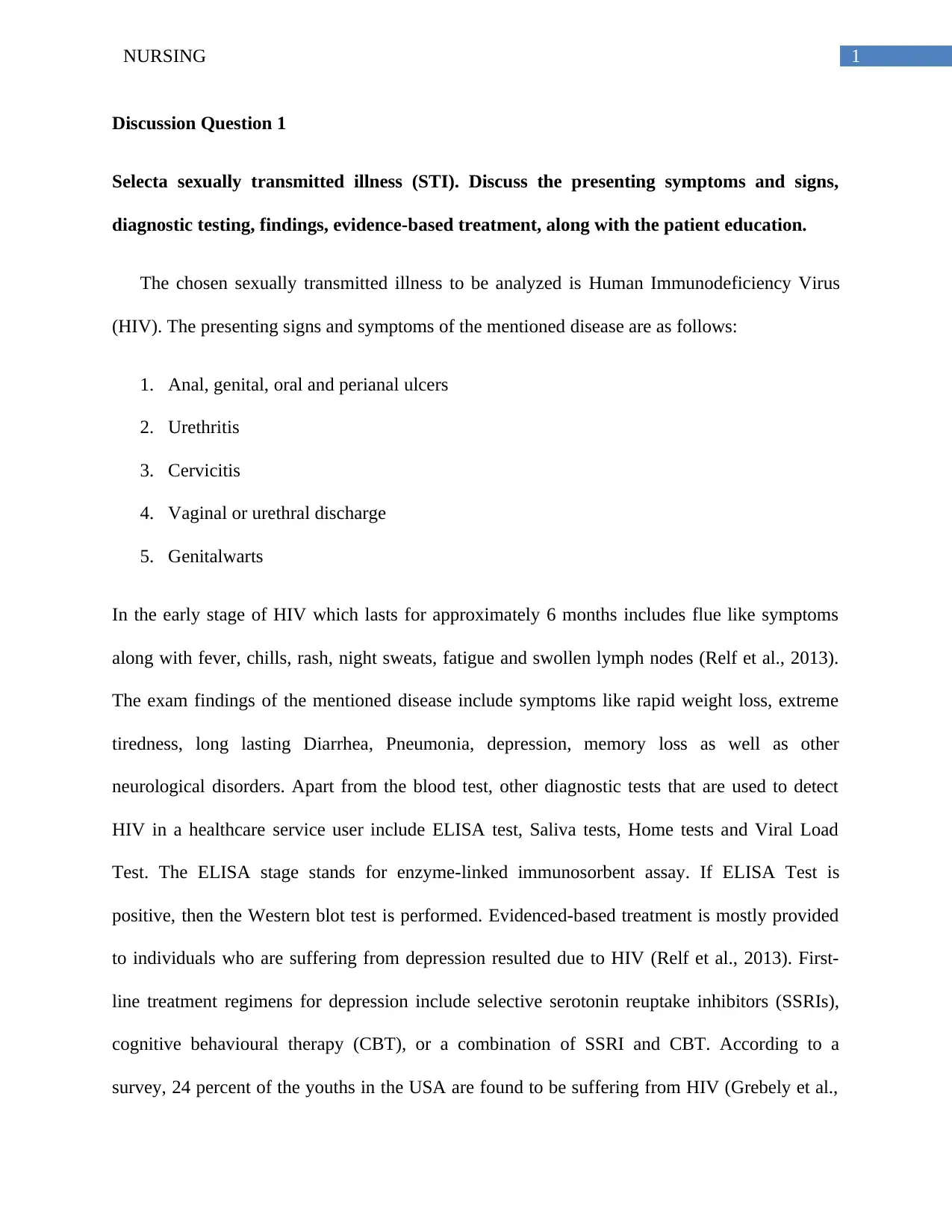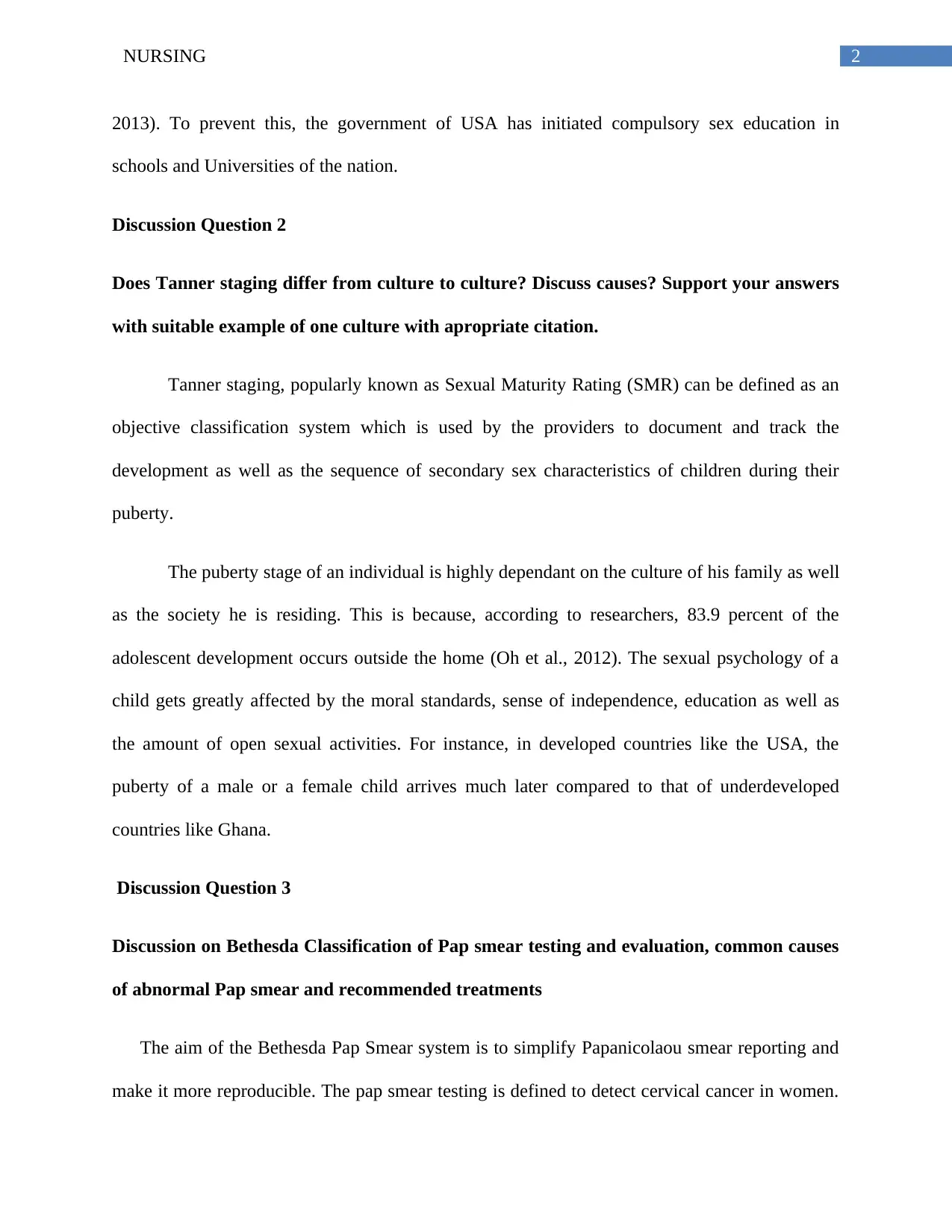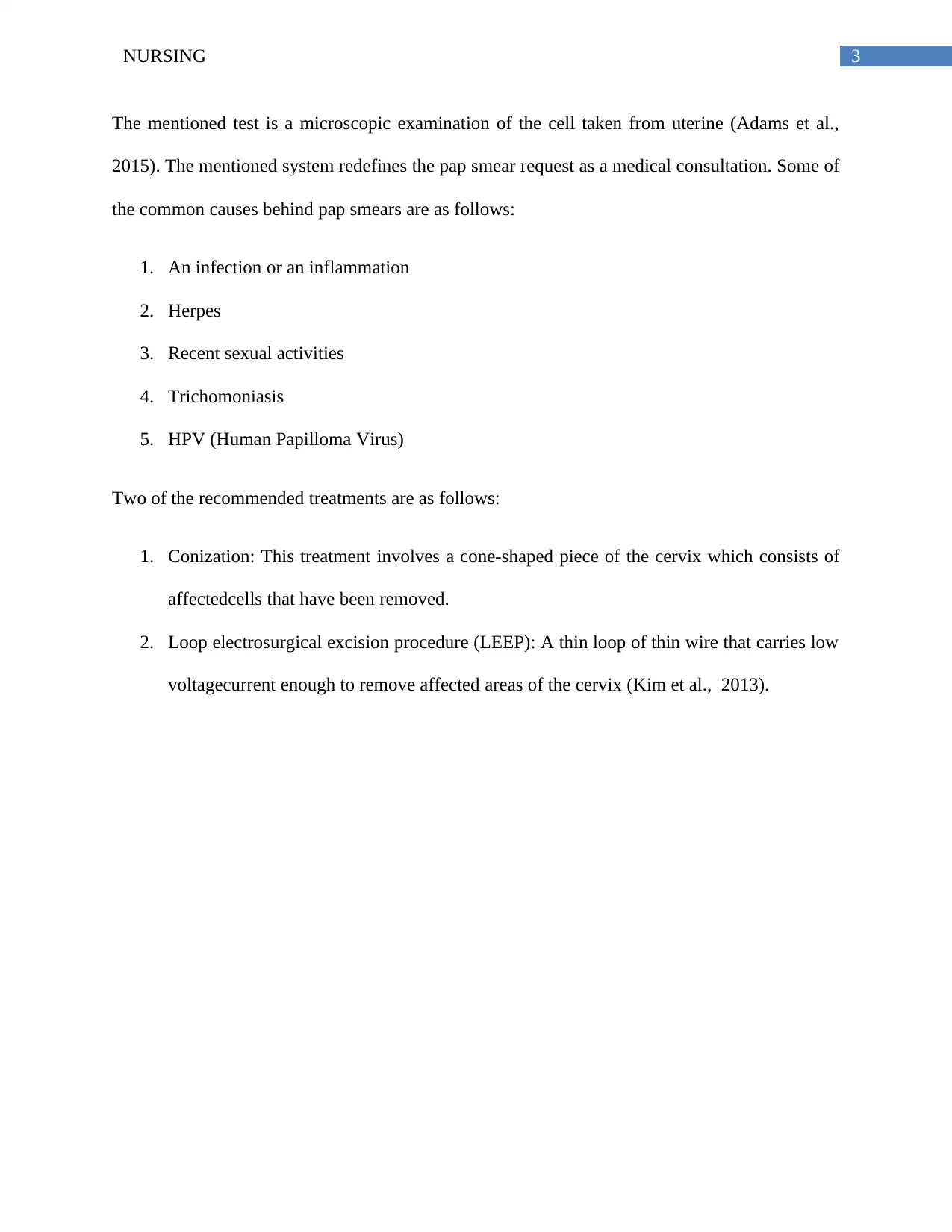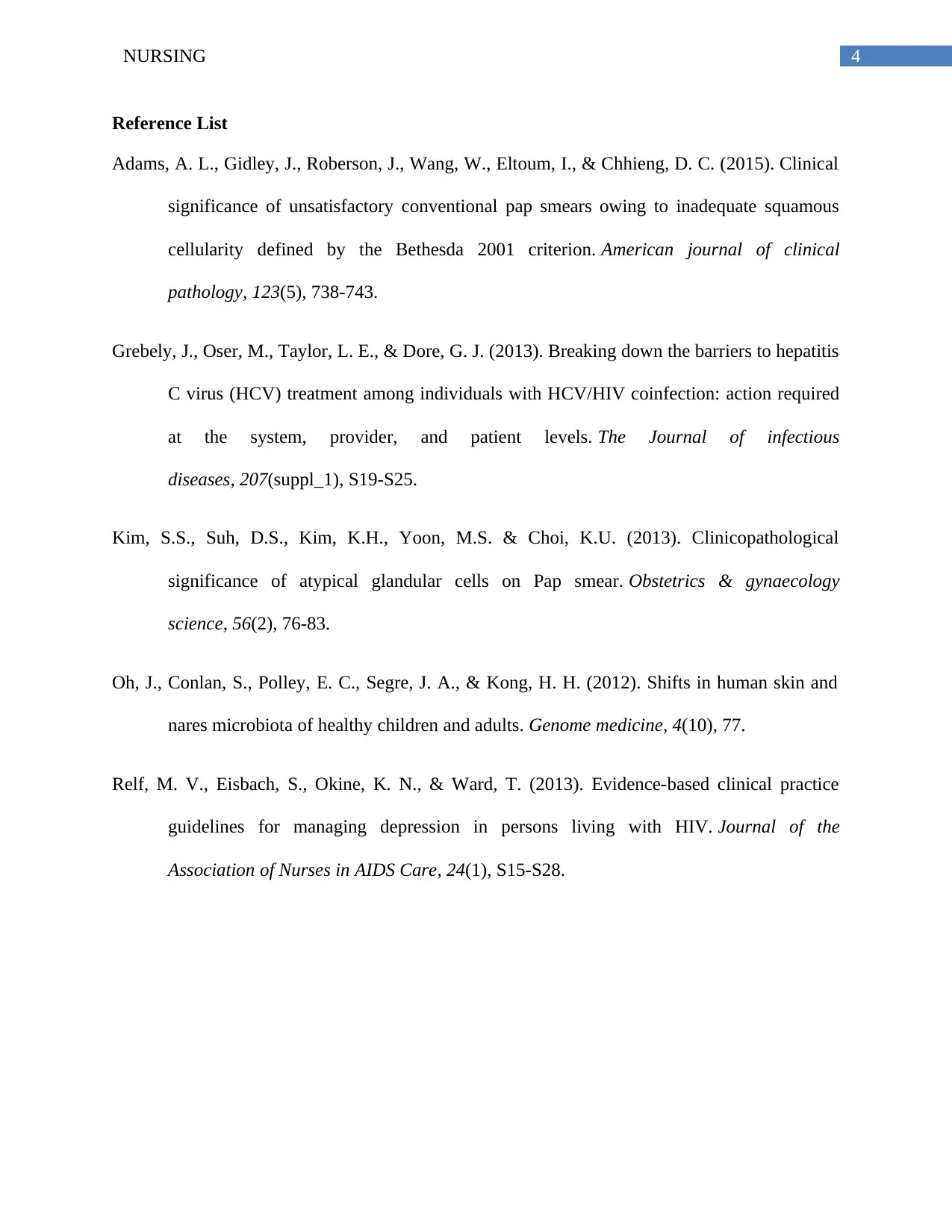Nursing: Analyzing HIV, Tanner Stage Variations & Pap Smear Tests
VerifiedAdded on 2023/06/12
|5
|1002
|163
Homework Assignment
AI Summary
This nursing assignment provides a detailed analysis of several key topics. It begins with a discussion of Human Immunodeficiency Virus (HIV), including its presenting symptoms and signs, diagnostic testing methods such as ELISA and Viral Load Tests, evidence-based treatment approaches, and the importance of patient education and prevention strategies, particularly among young adults. The assignment then explores Tanner staging, also known as Sexual Maturity Rating (SMR), discussing how cultural factors can influence the timing of puberty and adolescent development. Finally, it examines the Bethesda Classification system for Pap smear testing, outlining the purpose of Pap smears in detecting cervical cancer, common causes of abnormal results like infections and HPV, and recommended treatments such as conization and loop electrosurgical excision procedure (LEEP). This assignment is available on Desklib, a platform offering a wide array of study tools and resources for students.
1 out of 5






![[object Object]](/_next/static/media/star-bottom.7253800d.svg)